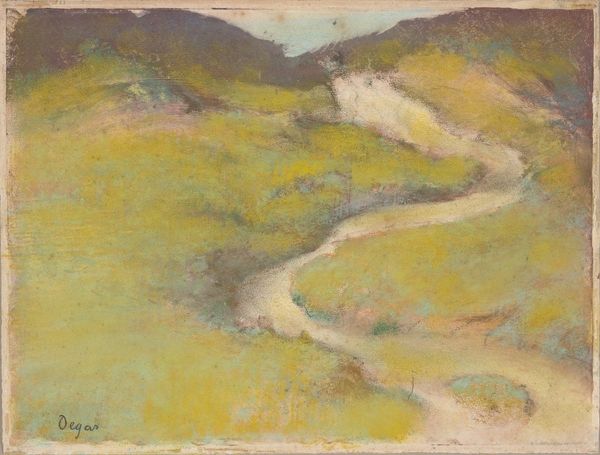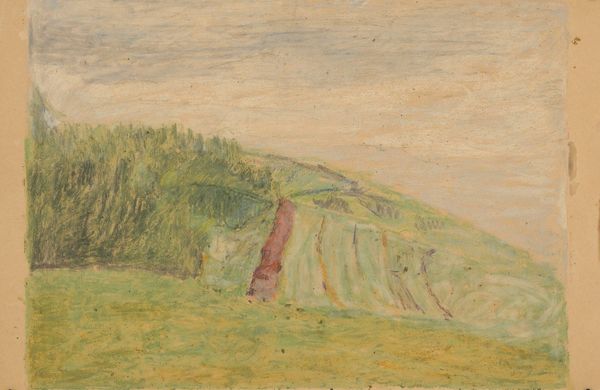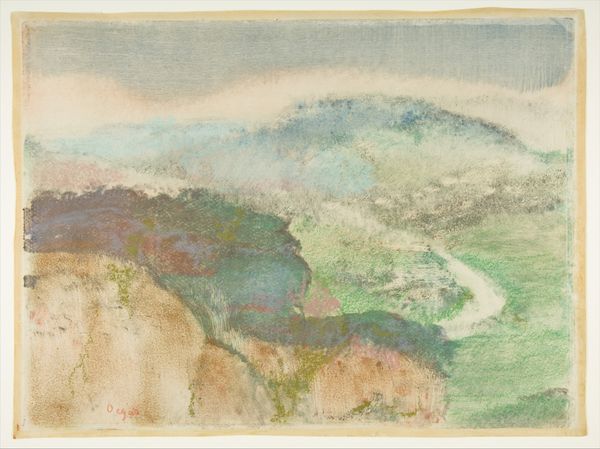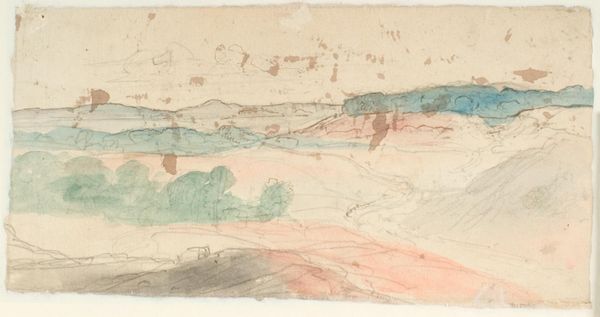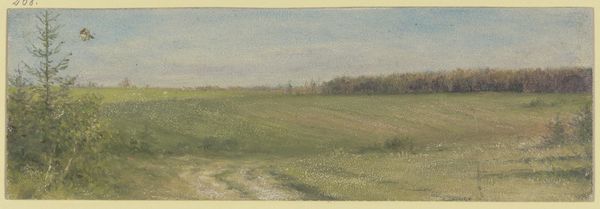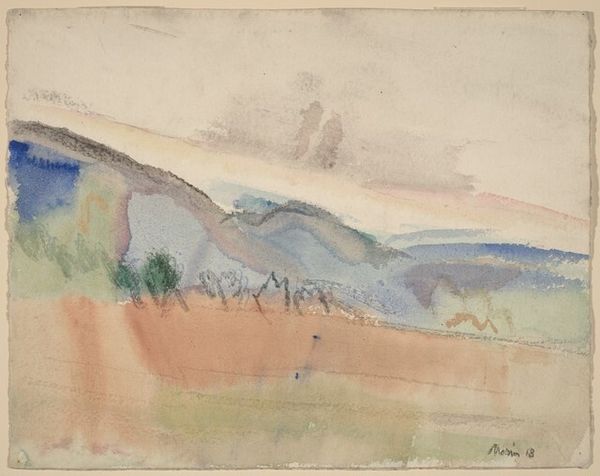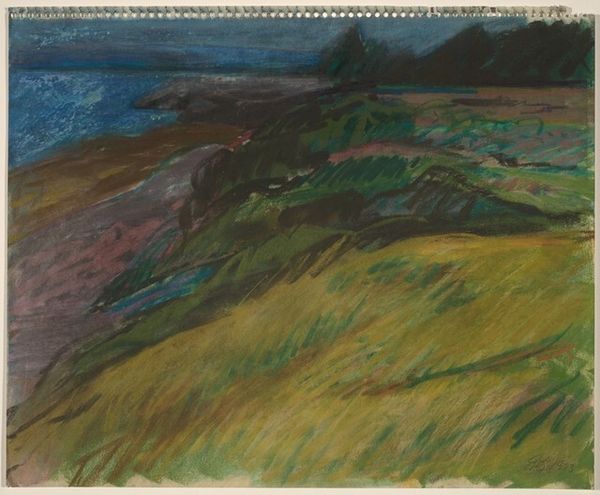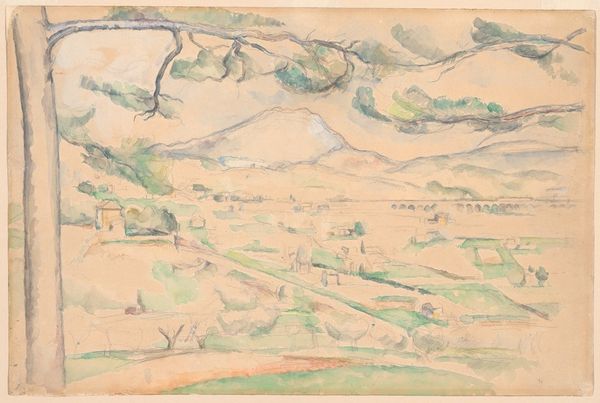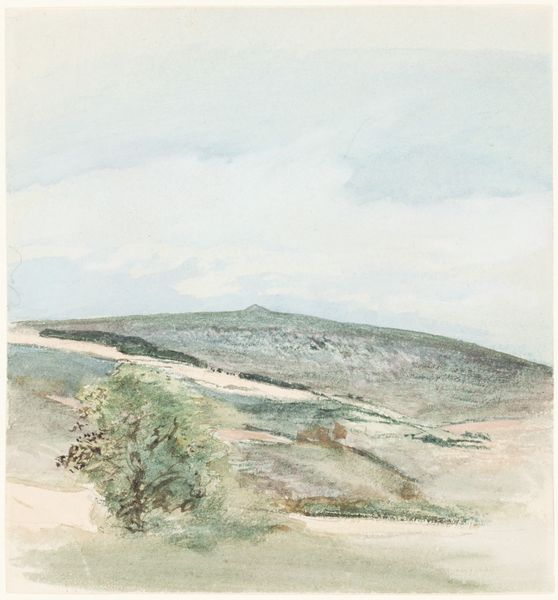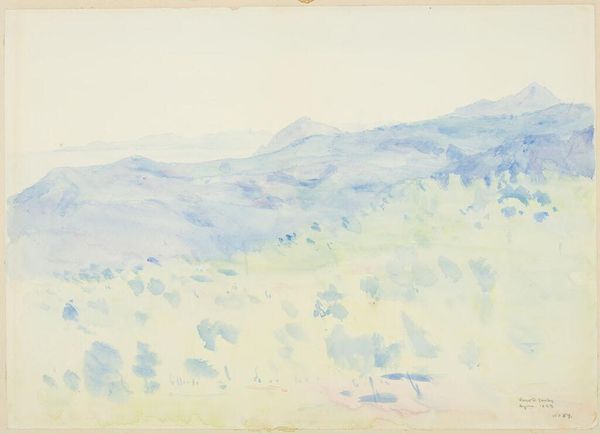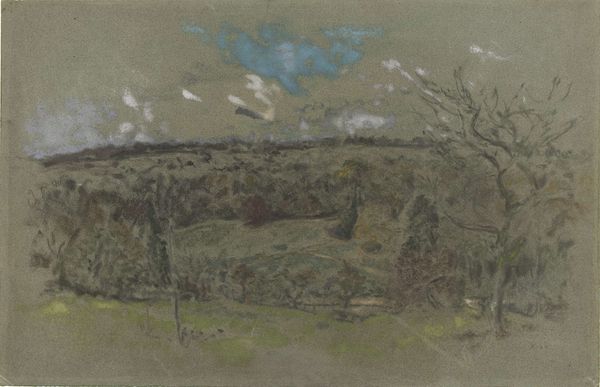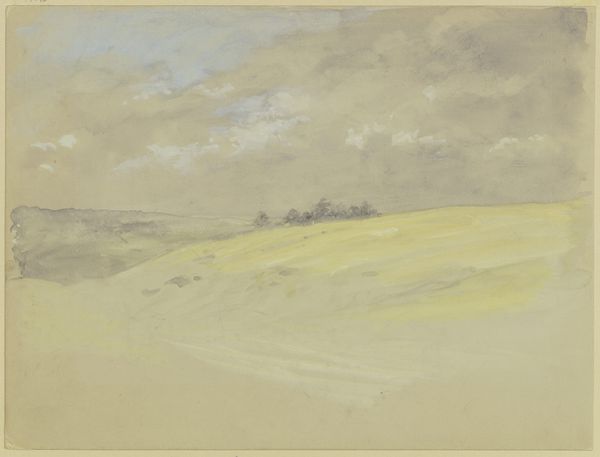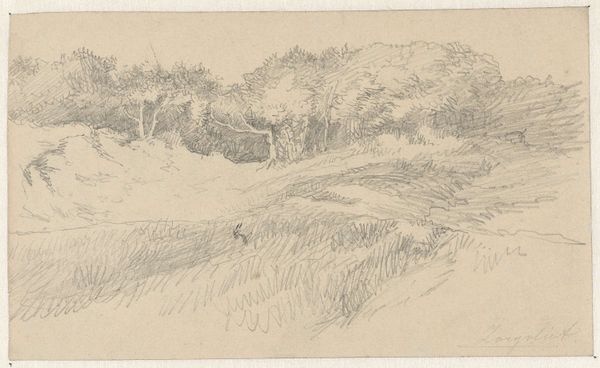
#
abstract painting
#
water colours
#
landscape
#
possibly oil pastel
#
fluid art
#
acrylic on canvas
#
underpainting
#
painting painterly
#
watercolour bleed
#
watercolour illustration
#
watercolor
Copyright: Public Domain: Artvee
Curator: Looking at Degas's "Landscape" from 1892, what’s your first take? It appears to be watercolor on paper. Editor: A bit unsettling, if I'm honest. There's something melancholic about the muted greens and almost sickly pink sky. The lack of defined forms suggests a dreamscape, rather than a real place. Curator: It does feel like a landscape remembered, or imagined. Degas was known for his dancers and interior scenes. A landscape, especially one this abstract, is somewhat of an anomaly in his oeuvre. This interests me. Perhaps this style symbolizes some kind of deeper emotional expression? The application reminds me of watercolour illustrations that border on fluid art. Editor: Or perhaps a departure spurred by the societal landscape of late 19th century France? Remember, this was a time of great social and political upheaval. I wonder if the abstracted forms reflect a world that felt increasingly uncertain to Degas. Was it perhaps an underpainting intended for later refinement, or an exploration of fluid mediums beyond his more structured works? Curator: Possibly both. It's fascinating how he uses the bleed of the watercolors to create atmosphere. The light seems to emanate from within the landscape itself, highlighting a sort of inner radiance, an idealized view of nature untroubled by external forces. Editor: But that radiance is fragile, isn't it? The blurred lines and soft colors suggest a world on the verge of disappearing. Think about the context – the rise of industrialization, the rapid urbanization of Paris. Was this a nostalgic yearning for a simpler, pre-industrial past? Is it worth considering its relation to abstract painting styles such as acrylic on canvas, and similar uses of fluid art? Curator: An elegy in paint, perhaps? The painting as a site for memory. It reflects, for me, not so much a specific place, but a timeless vision of nature. Editor: And a testament to the anxieties of a rapidly changing world, viewed through the lens of art history itself. It is a painting worth further viewing. Curator: I think it presents a complex interweaving of personal and cultural symbolism. Editor: Exactly – history layered with the personal touch of symbolic intent.
Comments
No comments
Be the first to comment and join the conversation on the ultimate creative platform.
